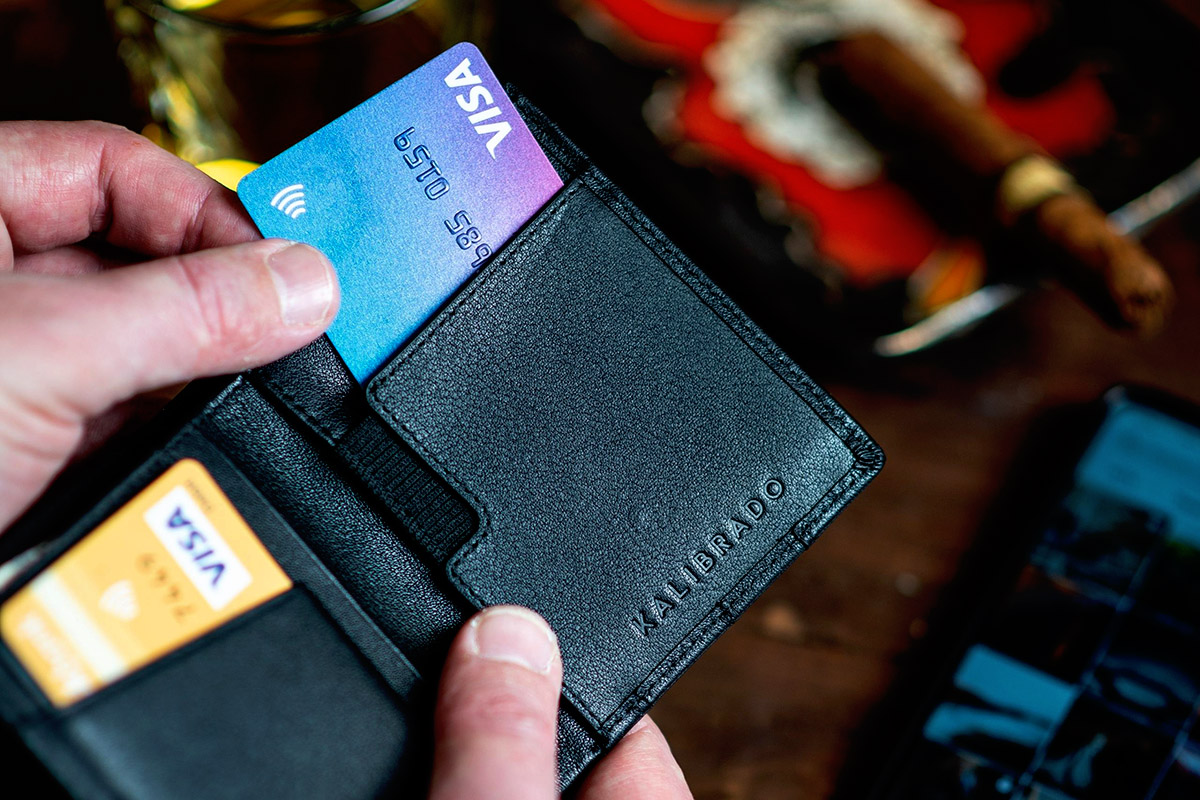

Finance
How Much Is Dexcom With Insurance?
Published: November 6, 2023
Discover how much Dexcom costs with insurance coverage. Learn about financing options to make managing your diabetes more affordable.
(Many of the links in this article redirect to a specific reviewed product. Your purchase of these products through affiliate links helps to generate commission for LiveWell, at no extra cost. Learn more)
Table of Contents
Introduction
Dealing with a chronic condition like diabetes can be challenging, but advancements in technology have made managing it a bit easier. One of the breakthroughs in diabetes management is the Dexcom Continuous Glucose Monitoring (CGM) system. Dexcom provides real-time glucose monitoring, allowing users to track their blood sugar levels throughout the day and night.
However, the cost of Dexcom can be a significant concern for many individuals. Fortunately, insurance coverage can help alleviate some of the financial burden. In this article, we will explore how much Dexcom costs with insurance and discuss various factors that can influence the overall cost.
Dexcom is a CGM device that consists of a small sensor attached to the skin, which measures glucose levels in the interstitial fluid. The sensor sends data to a receiver or a smartphone app, providing continuous glucose readings and alerts for high and low blood sugar levels.
For individuals with diabetes, the Dexcom CGM system offers several benefits. It provides real-time data that helps users make informed decisions about their diet, exercise, and insulin dosages. Additionally, Dexcom can also alert users and their caregivers about potential hypoglycemia or hyperglycemia episodes, providing peace of mind and helping to prevent dangerous situations.
Insurance coverage plays a crucial role in making Dexcom more accessible and affordable for individuals with diabetes. Most insurance plans, including private health insurance and Medicare, provide coverage for Dexcom CGMs. However, the extent of coverage can vary depending on the plan and the individual’s specific circumstances.
Insurance coverage for Dexcom typically includes the cost of the device itself, as well as the necessary sensors and transmitters. However, copayments, deductibles, and out-of-pocket expenses may still apply. It’s important to contact your insurance provider and review your policy to understand the details of your coverage for Dexcom.
In the next sections, we will delve deeper into the specifics of insurance coverage for Dexcom and discuss factors that can affect its cost. We will also provide tips on reducing Dexcom expenses with insurance, ensuring that you can effectively manage your diabetes without breaking the bank.
Understanding Dexcom
Dexcom is a leading provider of Continuous Glucose Monitoring (CGM) systems that revolutionize diabetes management. Understanding how Dexcom works and its components is essential in comprehending its value and potential cost.
A Dexcom CGM system consists of three main components: the sensor, transmitter, and receiver or smartphone app. The sensor is a small, flexible device that is inserted under the skin to measure glucose levels in the interstitial fluid. It continuously monitors glucose levels and sends this information to the transmitter.
The transmitter wirelessly sends the glucose data to the receiver or smartphone app, where users can view their glucose readings in real-time. The receiver or smartphone app displays glucose trends, alerts for high and low blood sugar levels, and provides insights to aid in diabetes management.
Dexcom CGM systems offer several advantages over traditional fingerstick glucose monitoring. Firstly, Dexcom provides continuous glucose readings, allowing users to see the trends and patterns in their glucose levels throughout the day and night. This data can help identify trends, such as post-meal spikes or overnight lows, that may be missed with intermittent fingerstick testing.
Additionally, Dexcom sends customizable alerts and alarms to notify users of potential hypoglycemia or hyperglycemia events. These alerts can provide early warnings and help users take corrective action, reducing the risk of severe highs or lows.
The Dexcom CGM system can also be integrated with insulin pumps, allowing for more precise insulin dosing decisions. By having real-time glucose data, users can make adjustments according to their personal requirements, lowering the risk of hypoglycemia or hyperglycemia.
One of the key benefits of Dexcom is the ability to share glucose data with healthcare providers or caregivers. This way, users can have a support network that can monitor their glucose levels remotely, even alerting them in case of emergencies.
Understanding how Dexcom works and the benefits it offers can help individuals with diabetes appreciate the value it brings to their diabetes management. While Dexcom can be a game-changer in terms of glucose monitoring and control, it’s essential to consider insurance coverage to make it more accessible and affordable.
Importance of Insurance coverage for Dexcom
Insurance coverage plays a crucial role in making Dexcom CGM systems more accessible and affordable for individuals with diabetes. Here are some reasons why insurance coverage for Dexcom is essential:
- Cost Relief: The cost of Dexcom CGM systems can be significant, especially when considering the initial device, sensors, and transmitters that need to be replaced regularly. Insurance coverage helps mitigate these costs, reducing the financial burden on individuals and making Dexcom more affordable.
- Better Diabetes Management: Dexcom CGM systems provide real-time glucose readings and alerts, helping individuals monitor their blood sugar levels more effectively. With insurance coverage, users can have greater access to this technology, promoting better diabetes management and improved overall health.
- Preventive Care: Dexcom CGM systems help individuals detect and manage high and low blood sugar levels promptly. Insurance coverage allows users to have access to these preventive measures, reducing the risk of severe complications and hospitalizations.
- Improved Quality of Life: Dexcom CGM systems provide peace of mind and independence for individuals with diabetes. With insurance coverage, individuals can enjoy the benefits of continuous glucose monitoring without worrying about the financial implications.
- Support Network: Insurance coverage for Dexcom may also include additional services, such as training and support from diabetes educators. These resources can help individuals navigate their diabetes management journey more effectively, leading to better overall outcomes.
It’s important to note that insurance coverage for Dexcom may vary depending on the insurance plan and individual circumstances. Some insurance providers may have more extensive coverage options, while others may require prior authorization or have specific criteria for coverage.
Prior to starting with Dexcom, it is recommended to review your insurance plan’s coverage details, including copayments, deductibles, and any applicable limitations or restrictions. Understanding your insurance coverage will give you a clearer picture of the out-of-pocket costs you may incur.
Overall, insurance coverage for Dexcom is crucial for individuals with diabetes. It not only helps alleviate the financial burden but also empowers individuals to effectively manage their diabetes, leading to improved health outcomes and an enhanced quality of life.
Insurance Coverage for Dexcom
Insurance coverage for Dexcom CGM systems can vary depending on the insurance plan and individual circumstances. It’s important to understand the different aspects of insurance coverage for Dexcom to make informed decisions. Here are key points to consider:
Private Health Insurance: Many private health insurance plans provide coverage for Dexcom CGM systems. However, the extent of coverage can differ between plans. Some plans may cover the entire cost, while others may require copayments, deductibles, or coinsurance. It’s essential to review your insurance policy or contact your insurance provider to understand the specific details of your coverage.
Medicare: Medicare also offers coverage for Dexcom CGM systems. Medicare Part B may cover certain CGM systems for individuals with diabetes who meet specific eligibility criteria. However, it’s important to note that coverage may be limited to specific types or models of CGMs. Consulting with your doctor and reviewing the Medicare guidelines can provide clarity on coverage options.
Medicaid: Medicaid coverage for Dexcom CGM systems may vary depending on the state. Some states include CGM coverage as part of their Medicaid programs, while others may have specific guidelines and requirements for coverage. Checking with your state Medicaid office or speaking with a healthcare professional can help you understand the coverage options available to you.
Insurance Authorization: Some insurance plans may require prior authorization for Dexcom CGM coverage. This means that your doctor needs to provide necessary documentation, such as medical records or a prescription, to justify the need for Dexcom. It’s important to follow the authorization process outlined by your insurance provider to ensure smooth coverage.
Appealing Denials: In some cases, insurance claims for Dexcom CGM systems may be denied initially. However, you have the right to appeal the denial and provide additional information or documentation to support your case. Working closely with your healthcare provider and insurance company can help increase your chances of a successful appeal.
It’s important to note that the information provided above is a general overview and may vary based on specific insurance plans and policies. To understand the exact coverage details for Dexcom CGM systems, it is recommended to review your insurance policy or contact your insurance provider directly.
By understanding the insurance coverage options available, you can take the necessary steps to ensure that Dexcom CGM systems are included in your diabetes management plan without incurring excessive out-of-pocket expenses.
Factors Affecting Dexcom Cost with Insurance
Several factors can influence the cost of Dexcom CGM systems with insurance coverage. Understanding these factors will help you anticipate potential expenses and make informed decisions. Here are some key factors to consider:
- Insurance Plan Type: The type of insurance plan you have can significantly impact the cost of Dexcom. Different plans may have varying levels of coverage, copayments, deductibles, and coinsurance. It’s important to review your specific plan details to understand how much you may be responsible for paying out of pocket.
- Insurance Coverage Policy: Even within the same insurance provider, coverage policies can differ. Some policies may have more comprehensive coverage for Dexcom CGM systems, while others may have limitations or exclusions. Review your policy to understand the specifics of your coverage, including whether it covers the device, sensors, transmitters, or other related expenses.
- Network Providers: Insurance plans often have a network of preferred providers. Using in-network providers for your Dexcom CGM systems may result in lower out-of-pocket costs. Check if Dexcom is on your insurance plan’s list of preferred providers to maximize your coverage.
- Out-of-Pocket Expenses: Even with insurance coverage, you may still have to pay out-of-pocket expenses such as copayments, deductibles, and coinsurance. These costs can vary depending on your insurance plan. Understanding your plan’s out-of-pocket requirements will help you plan and budget accordingly.
- Formulary Changes: Insurance plans can make changes to their formularies, which are the lists of medications and medical devices they cover. It’s important to stay informed about any formulary changes that may affect your coverage for Dexcom CGM systems. If necessary, you can work with your healthcare provider to explore alternative options that are covered by your insurance.
- Insurance Reimbursement: Depending on your insurance plan, you may initially have to pay for Dexcom CGM systems out-of-pocket and then seek reimbursement. Familiarize yourself with the reimbursement process outlined by your insurance provider to ensure a smooth reimbursement experience and minimize any financial strain.
It’s crucial to keep in mind that the factors listed above are general considerations and may vary based on your specific insurance plan and coverage policies. To accurately determine the cost of Dexcom CGM systems with insurance, it is recommended to review your insurance policy, consult with your insurance provider, and work closely with your healthcare team.
By understanding the factors that can affect the cost, you can make informed decisions, effectively manage your diabetes, and optimize your insurance coverage for Dexcom CGM systems.
Average Cost of Dexcom with Insurance
The average cost of Dexcom with insurance can vary depending on several factors, including insurance coverage policies, plan types, and individual circumstances. It’s important to note that these figures are estimates and may not reflect the exact costs for every individual. However, understanding the average cost can provide a general idea of what to expect.
On average, individuals with insurance coverage for Dexcom CGM systems can expect to pay between $200 and $500 per month. This cost includes the initial device, sensors, transmitters, and other related expenses. However, it’s important to note that copayments, deductibles, and coinsurance may also apply and can vary significantly between insurance plans.
Some insurance plans may offer more comprehensive coverage, resulting in lower out-of-pocket costs for Dexcom CGM systems. For example, individuals with private health insurance plans may benefit from negotiated discounted rates or lower copayments. Additionally, some insurance plans may have specific coverage options for Dexcom, such as a separate durable medical equipment (DME) benefit that reduces the cost burden.
Medicare coverage for Dexcom CGM systems also plays a crucial role in determining the average cost. Medicare typically covers Dexcom CGM systems under Medicare Part B, and the cost can vary depending on the specific plan. It’s important to review Medicare guidelines and consult with your healthcare provider to understand the costs associated with Medicare coverage.
Medicaid coverage for Dexcom CGM systems varies by state, and the average cost can differ accordingly. Some states may provide comprehensive coverage, while others may have more limited coverage options. It’s advisable to check with your state Medicaid office or consult with a healthcare professional to understand the average cost and coverage details.
It’s important to remember that these average cost estimates are subject to change, as insurance coverage policies and pricing can fluctuate over time. Additionally, individual circumstances, such as meeting deductibles or reaching out-of-pocket maximums, can also affect the overall cost of Dexcom with insurance.
To obtain the most accurate information regarding the cost of Dexcom CGM systems with insurance, it’s recommended to contact your insurance provider directly. They can provide specific details about coverage policies, copayments, deductibles, and coinsurance, ensuring that you have a clear understanding of the expected costs.
By being well-informed about the average cost and specific insurance coverage for Dexcom, you can effectively plan and budget for managing your diabetes while utilizing the benefits of continuous glucose monitoring.
Tips for Reducing Dexcom Cost with Insurance
Managing the cost of Dexcom CGM systems with insurance coverage can be important for individuals with diabetes. Here are some tips to help reduce the cost and maximize your insurance benefits:
- Understand Your Insurance Coverage: Review your insurance policy and understand the specifics of your coverage for Dexcom CGM systems. Be aware of copayments, deductibles, coinsurance, and any limitations or requirements that may apply.
- In-Network Providers: Use in-network providers for Dexcom CGM systems whenever possible. In-network providers are typically associated with negotiated rates, which can result in lower out-of-pocket costs.
- Manufacturer Discounts or Assistance Programs: Dexcom offers various discounts and assistance programs for eligible individuals. These programs may provide cost savings or financial assistance for Dexcom CGM systems. Check with Dexcom directly to explore available options.
- Prior Authorization Assistance: If your insurance plan requires prior authorization, work closely with your healthcare provider to ensure the necessary documentation is provided promptly. This will help avoid delays or denials and ensure that your insurance covers the Dexcom CGM system.
- Generic Alternatives: Explore alternative CGM systems or sensors that may be covered by your insurance plan. In some cases, generic alternatives or different brands may provide similar functionality at a lower cost. Consult with your healthcare provider to discuss suitable alternatives.
- Appeal Denied Claims: If your insurance claim for Dexcom CGM systems is denied, don’t hesitate to appeal the decision. Provide any additional information or documentation that could support the medical necessity of Dexcom. Working with your healthcare provider and insurance company can improve the chances of a successful appeal.
- Compare Insurance Plans: If you have the opportunity to choose or switch insurance plans, compare the coverage options for Dexcom CGM systems. Consider factors such as premiums, coverage levels, and out-of-pocket costs. Selecting a plan that covers Dexcom adequately can result in significant cost savings.
- Utilize Flexible Spending Accounts (FSAs) or Health Savings Accounts (HSAs): If available, consider using funds from an FSA or HSA to cover the costs of Dexcom CGM systems. These accounts allow you to set aside pre-tax dollars for eligible medical expenses, providing tax advantages and potential cost savings.
Remember, these tips may not apply to every individual or insurance plan. It’s important to assess your specific insurance coverage and consult with your healthcare provider and insurance company to determine the most effective strategies for reducing the cost of Dexcom CGM systems.
By employing proactive measures and exploring cost-saving options, you can maximize your insurance benefits and ensure that Dexcom CGM systems remain a valuable tool in your diabetes management while minimizing your out-of-pocket expenses.
Conclusion
Managing diabetes with the help of Dexcom Continuous Glucose Monitoring (CGM) systems has become easier and more effective. Insurance coverage plays a vital role in making Dexcom CGM systems accessible and affordable for individuals with diabetes. Understanding the various aspects of insurance coverage for Dexcom is crucial in navigating the complexities of cost and reimbursement.
Throughout this article, we have discussed the importance of insurance coverage for Dexcom and how it can alleviate the financial burden associated with diabetes management. We explored the components of Dexcom CGM systems and their benefits in providing real-time glucose monitoring and alerts for high and low blood sugar levels.
We also delved into the factors that can affect the cost of Dexcom with insurance coverage. Elements such as insurance plan type, coverage policies, network providers, and out-of-pocket expenses can all influence the overall cost. It’s essential to understand these factors to anticipate potential expenses and make informed decisions.
Additionally, we provided tips for reducing the cost of Dexcom CGM systems with insurance. These tips included understanding your insurance coverage, utilizing in-network providers, exploring manufacturer discounts or assistance programs, being proactive with prior authorizations, considering generic alternatives, appealing denied claims, comparing insurance plans, and utilizing flexible spending or health savings accounts when available.
By implementing these strategies, individuals can mitigate the financial burden of Dexcom CGM systems and make the most of their insurance benefits. It’s crucial to stay proactive, review insurance policies, consult healthcare providers, and communicate with insurance companies to navigate the complexities of coverage and reimbursement.
Ultimately, insurance coverage for Dexcom CGM systems empowers individuals with diabetes to effectively manage their condition, improve their health outcomes, and enhance their quality of life. By leveraging insurance benefits and adopting cost-saving measures, individuals can embrace the benefits of Dexcom CGM systems without undue financial stress.
Remember, each insurance plan is unique, and coverage may vary. It is important to thoroughly review your insurance policy, consult with your healthcare provider, and communicate with your insurance company for the most accurate and up-to-date information regarding Dexcom coverage and costs.














